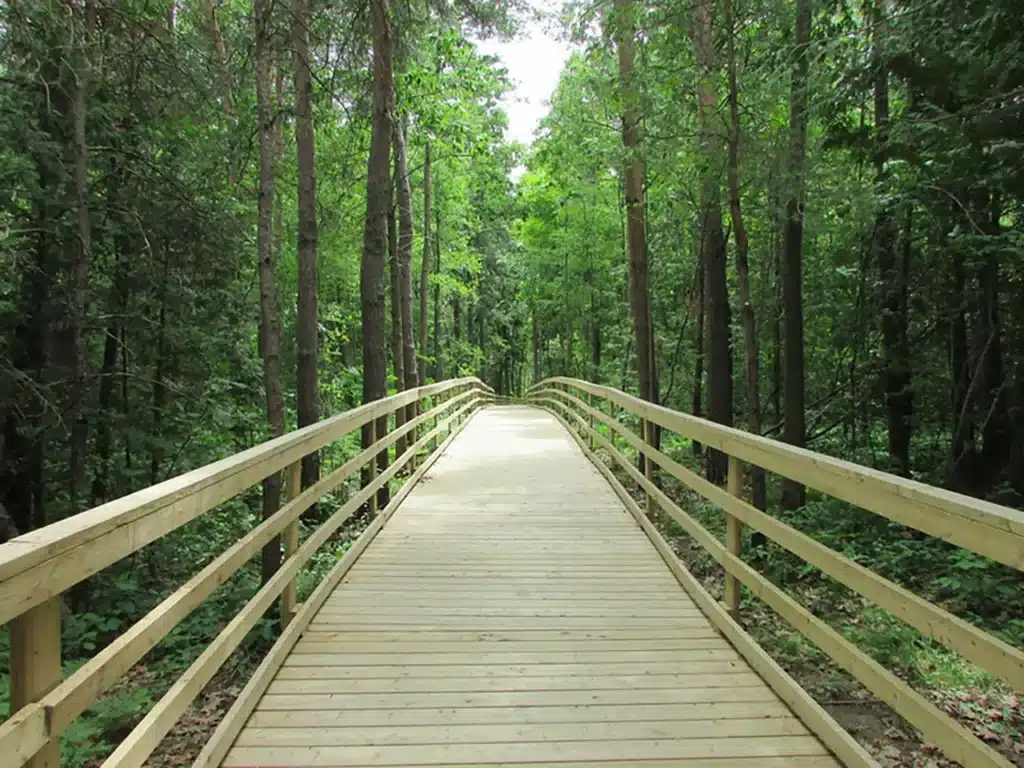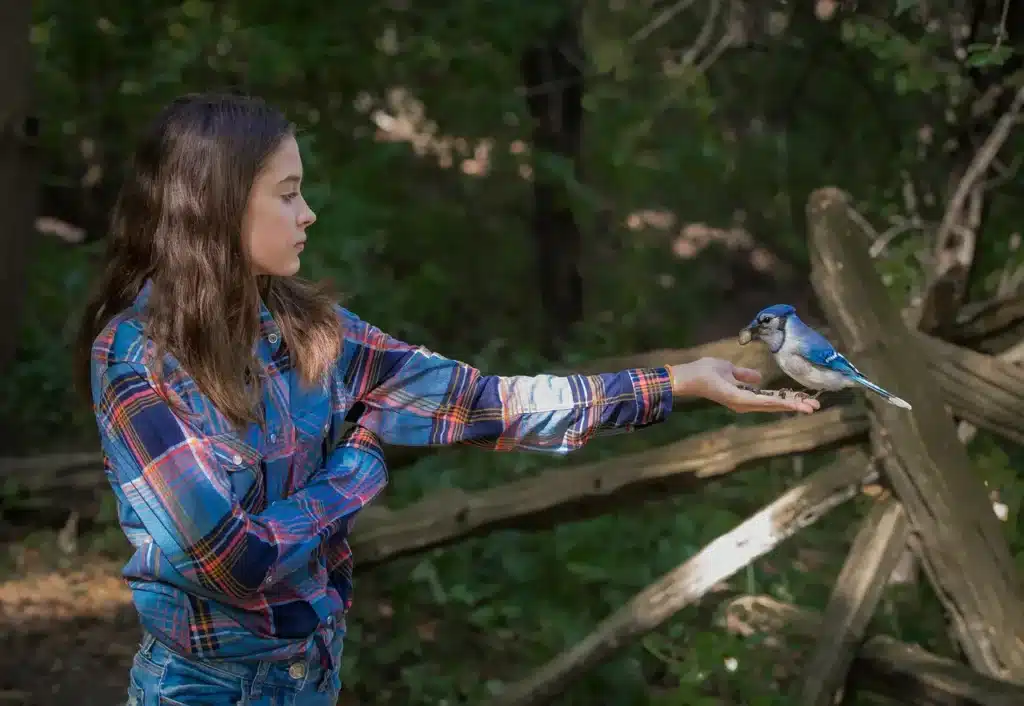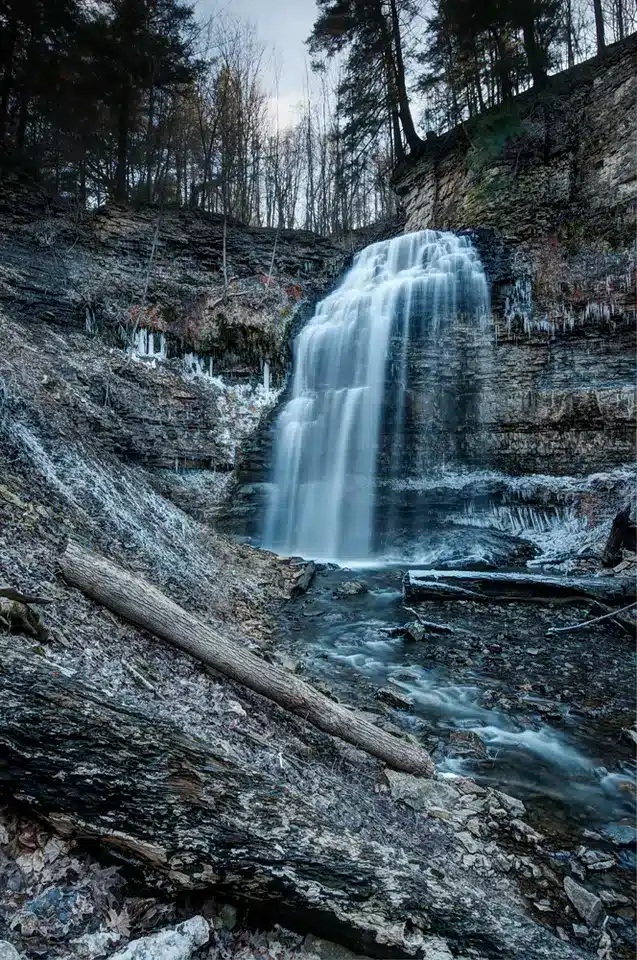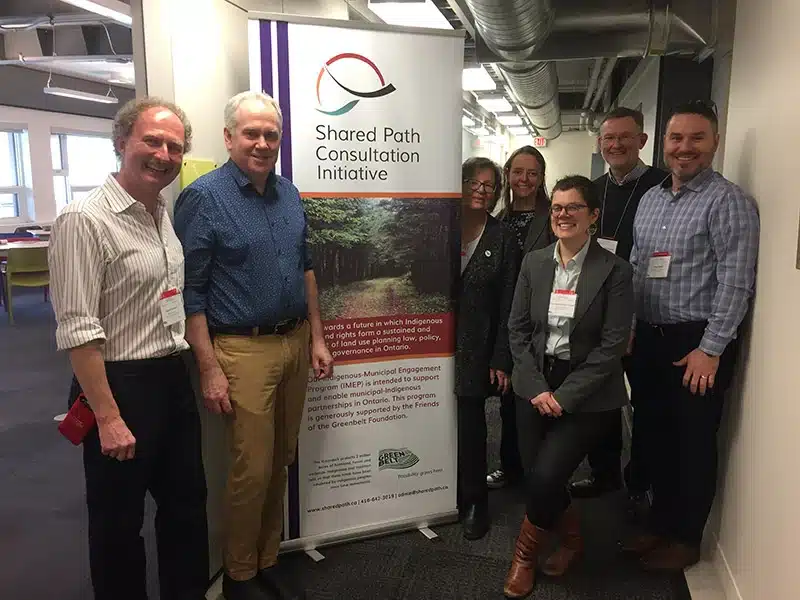2018-2019 Annual Report
2024-2025 Annual Report
2023-2024 Annual Report
2022-2023 Annual Report
2021-2022 Annual Report
2020-2021 Annual Report
2019-2020 Annual Report
2018-2019 Annual Report
2017-2018 Annual Report
2016-2017 Annual Report
2015-2016 Annual Report
2014-2015 Annual Report
2013-2014 Annual Report
2012-2013 Annual Report
2011-2012 Annual Report
2010-2011 Annual Report
2009-2010 Annual Report
2008-2009 Annual Report
2007-2008 Annual Report
2006-2007 Annual Report
2005-2006 Annual Report
In 2018/19 the Greenbelt Foundation
Natural infrastructure refers to a naturally-occurring or naturalized area or system, such as a forest, wetland or river valley (collectively known as “natural assets”) that benefits local communities by providing important ecosystem services such as flood prevention, water purification, temperature modification, atmospheric and noise pollution buffering, and more. Natural infrastructure is cost-effective, increases in value with age and offers more flexibility than built infrastructure.
Some important areas of natural infrastructure in the Greenbelt include the forests and aquifers of the Oak Ridges Moraine, the watersheds of the Niagara Escarpment and the 21 Greenbelt-protected Urban River Valleys that channel fresh water through Canada’s most developed region.
The protected landscapes of Ontario’s Greenbelt provide critical natural infrastructure to southern Ontario’s Greater Golden Horseshoe region, which is home to approximately 9 million people.
The Greenbelt Foundation has built strategic partnerships with key organizations, helping municipalities and developers invest in natural assets. Our Partnerships include:
Municipal Natural Assets Initiative (MNAI), an organization that teams up with Canadian municipalities to develop resilient, long-term natural infrastructure alternatives. Together with MNAI, the Foundation is building partnerships with major cities and rural municipalities across the Greater Golden Horseshoe, with current projects in Peel and Halton regions.
In Peel Region, for example, MNAI is helping integrate local natural assets from the Credit River Valley watershed into municipal asset management frameworks, so that they may be valued and ultimately invested in.
Ducks Unlimited Canada (DUC) and the Greenbelt Foundation are partnering to support the installation of a naturalized stormwater management system in a new development site in accordance with existing municipal policy and regulations. This system, which will take the form of a naturalized pond, will mimic a natural asset by becoming a fully-functioning ecosystem that will filter and store stormwater, prevent flooding, and provide important habitat and greenspace.
DUC is currently in the process of establishing partnerships with a suitable municipality and developer to demonstrate this technology. Through this pilot demonstration the Foundation and DUC are excited to encourage other regional developers and municipalities to also consider naturalized stormwater management solutions in new and existing developments.
With our support, MNAI and DUC are working to make valuing and investing in natural assets a mainstream approach for municipalities, developers and community groups across the Greater Golden Horseshoe.
Photo credit: Taku Kumabe
Personalizing Climate Change
Engaging Underserved Communities
Working Landscape
Investing in Sustainable Food Systems.
As a working landscape, the Greenbelt plays a unique role in Ontario’s food system and is vital to Ontario’s long-term sustainability and prosperity.
With the support of the Greenbelt Foundation and through its protected status, Ontario’s Greenbelt preserves 750,000 acres of some of Canada’s most fertile farmland within one of its most favourable growing climates. Greenbelt farmland is in close proximity to Canada’s most densely populated region, making it a critical resource for advancing local food initiatives.
The Greenbelt is a working landscape that:
The Greenbelt Foundation is supporting Ontario’s Greenbelt in becoming one of the world’s most sustainable food-producing regions. We achieve this by focusing on:
The Greenbelt Foundation is supporting Ontario’s Greenbelt in becoming one of the world’s most sustainable food-producing regions





































